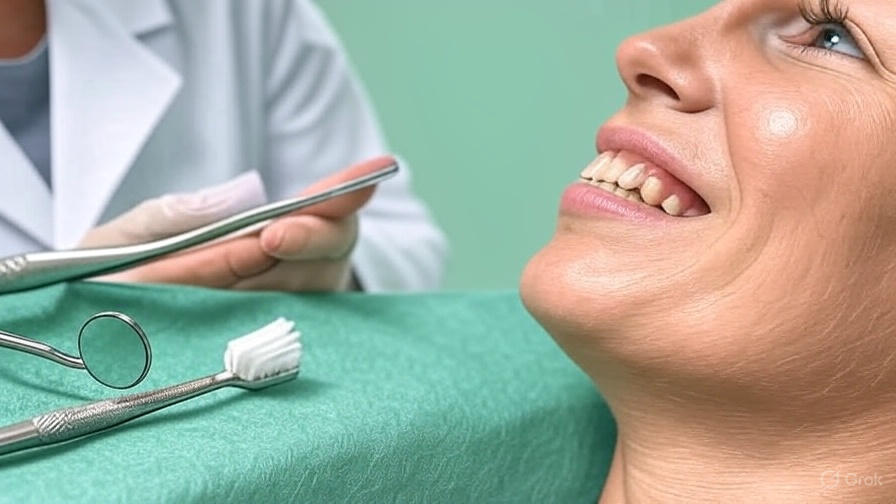
Gum disease, also known as periodontal disease, is a common condition that affects the tissues surrounding the teeth. It is primarily caused by poor oral hygiene, leading to a buildup of plaque and tartar on the teeth. If left untreated, gum disease can progress from gingivitis, the early stage, to more severe periodontitis, which can result in tooth loss and other health complications. Preventive dental care plays a crucial role in early detection and treatment of gum disease, helping to maintain oral health and prevent more serious issues. Here you should consult with the professional Preventive dental services provider to ensure proper diagnosis, personalized treatment plans, and ongoing care to effectively manage and prevent the progression of gum disease.
What is Gum Disease?
Gum disease is an infection of the tissues that hold your teeth in place. It starts with swollen, red, and bleeding gums. If untreated, it can spread to the bones surrounding the gums, making it painful to chew. In severe cases, teeth may become loose or need to be removed. There are two main stages:
Stages of Gum Disease
- Gingivitis: The early stage, characterized by inflamed gums. It is reversible with proper oral hygiene and professional cleanings.
- Periodontitis: The advanced stage, where the infection affects the bone and tissues supporting the teeth, leading to irreversible damage.
Research suggests that nearly 50% of U.S. adults have some form of gum disease, making it a leading cause of tooth loss.
Causes of Gum Disease
The primary cause of gum disease is the buildup of plaque, a sticky film of bacteria that forms on the teeth. If not removed through regular brushing and flossing, plaque can harden into tartar, which can only be removed by a dental professional. Other factors that increase the risk of gum disease include:
- Poor oral hygiene habits
- Smoking or using tobacco products
- Hormonal changes (e.g., during pregnancy or menopause)
- Certain medications that reduce saliva flow
- Genetic predisposition
- Conditions like diabetes that weaken the immune system
These factors can exacerbate plaque buildup, making preventive dental treatment essential for at-risk individuals.
Symptoms of Gum Disease
Early detection is key to treating gum disease effectively. Common symptoms include:
- Red, swollen, or tender gums
- Bleeding gums, especially during brushing or flossing
- Bad breath or a persistent bad taste
- Receding gums, making teeth appear longer
- Deep pockets between teeth and gums
- Loose or shifting teeth
- Changes in how teeth fit together when biting
- Pus between teeth and gums
If you notice any of these signs, it’s important to see a dentist promptly to prevent further damage.
Prevention of Gum Disease
Preventing gum disease involves maintaining good oral hygiene and regular dental care. Key preventive measures include:
- Brushing your teeth at least twice a day with fluoride toothpaste
- Flossing daily to remove plaque from between teeth
- Using an antibacterial mouthwash to reduce bacteria
- Quitting smoking and avoiding tobacco products
- Eating a balanced diet and limiting sugary snacks
- Visiting your dentist regularly for cleanings and check-ups
For those at higher risk, such as individuals with diabetes or a family history of gum disease, more frequent dental visits may be necessary. Regular perio maintenance and teeth cleaning can help prevent the progression of gum disease. Searching for preventive dentistry near you, can connect you with local experts to support your oral health.
Prevalence of Gum Disease
Gum disease is widespread in the U.S. According to the Centers for Disease Control and Prevention (CDC), here are some key statistics from 2009–2014:
| Group | Prevalence |
| U.S. adults aged 30+ years | About 4 in 10 |
| U.S. men aged 30+ years | About 1 in 2 |
| U.S. women aged 30+ years | About 1 in 3 |
| U.S. adults aged 65+ years | About 60% |
| Current smokers aged 30+ years | 62% |
Source: CDC Periodontal Disease
These statistics highlight the importance of dental preventive care for high-risk groups like smokers and older adults.
Frequently Asked Questions (FAQs)
- What are the early signs of gum disease?
Early signs include red, swollen, or bleeding gums, especially during brushing or flossing. Bad breath and a persistent bad taste can also be indicators. - Can gum disease be reversed?
In its early stage (gingivitis), gum disease can be reversed with proper oral hygiene and professional cleanings. However, periodontitis cannot be reversed but can be managed with ongoing care. - How often should I visit the dentist to prevent gum disease?
It’s recommended to visit the dentist at least twice a year for routine check-ups and cleanings.However, patients diagnosed with periodontal disease should schedule professional cleanings every 3 to 4 months. These more frequent visits are essential for controlling the progression of the disease and maintaining gum and bone health. - Is gum disease linked to other health conditions?
Yes, research suggests gum disease is linked to conditions like diabetes, heart disease, and respiratory issues. Managing gum disease can improve overall health. - What is the difference between gingivitis and periodontitis?
Gingivitis is the early, reversible stage with gum inflammation. Periodontitis is the advanced stage where the infection damages bone and tissues, leading to irreversible harm.
Conclusion
Understanding the causes, symptoms, and prevention of gum disease is essential for maintaining good oral health. By practicing good oral hygiene and seeking regular dental care, you can prevent gum disease and its complications. If you suspect you have gum disease, don’t hesitate to contact Snow Family Dentistry for a consultation. Our preventive dental services are designed to help you maintain a healthy smile.
Don’t let gum disease affect your oral health. Schedule an appointment with Snow Family Dentistry today to learn more about our preventive dental services and how we can help you maintain a healthy smile.





